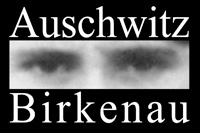




Expulsion
In connection with the founding of the Auschwitz camp, the German administrative authorities expelled the local Polish and Jewish civilians. In total, over 15,000 people were forced to leave their homes.
First, Poles living in immediate proximity to the camp were forced to leave their homes; then the same thing happened to residents of the Zasole district of Oświęcim. The area became part of the so-called camp interest zone. Some of the houses were adapted as dwellings for SS men and their families, and most of the other vacated buildings were demolished. When a decision was made to create SS farms in the vicinity of the camp, Polish and Jewish civilians were expelled from eight villages near Oświęcim. The Auschwitz authorities confiscated all livestock, movable property and real estate in the vacated area. Almost a thousand houses and other buildings were demolished, and the material thus obtained used in building Birkenau and several of the sub‑camps. The entire Jewish population of Oświęcim was also expelled and their dwellings were assigned to German workers of the IG Farben plant. In connection with the construction by the company of the petrochemical plant, the majority of the residents of the village of Monowice were also expelled and the Auschwitz III-Monowitz camp was constructed there.
Apart from these expulsions, German authorities also removed the Polish population of other villages near Oświęcim. This was connected with the policy of “strengthening German nationhood” in Polish land annexed by the Third Reich. German colonists took the place of the expelled.
